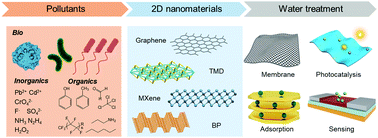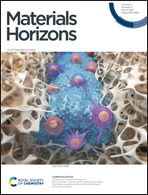Engineered two-dimensional nanomaterials: an emerging paradigm for water purification and monitoring
Abstract
Water scarcity has become an increasingly complex challenge with the growth of the global population, economic expansion, and climate change, highlighting the demand for advanced water treatment technologies that can provide clean water in a scalable, reliable, affordable, and sustainable manner. Recent advancements on 2D nanomaterials (2DM) open a new pathway for addressing the grand challenge of water treatment owing to their unique structures and superior properties. Emerging 2D nanostructures such as graphene, MoS2, MXene, h-BN, g-C3N4, and black phosphorus have demonstrated an unprecedented surface-to-volume ratio, which promises ultralow material use, ultrafast processing time, and ultrahigh treatment efficiency for water cleaning/monitoring. In this review, we provide a state-of-the-art account on engineered 2D nanomaterials and their applications in emerging water technologies, involving separation, adsorption, photocatalysis, and pollutant detection. The fundamental design strategies of 2DM are discussed with emphasis on their physicochemical properties, underlying mechanism and targeted applications in different scenarios. This review concludes with a perspective on the pressing challenges and emerging opportunities in 2DM-enabled wastewater treatment and water-quality monitoring. This review can help to elaborate the structure–processing–property relationship of 2DM, and aims to guide the design of next-generation 2DM systems for the development of selective, multifunctional, programmable, and even intelligent water technologies. The global significance of clean water for future generations sheds new light and much inspiration in this rising field to enhance the efficiency and affordability of water treatment and secure a global water supply in a growing portion of the world.

- This article is part of the themed collection: Horizons Community Board Collection: Antimicrobial materials and surfaces


 Please wait while we load your content...
Please wait while we load your content...